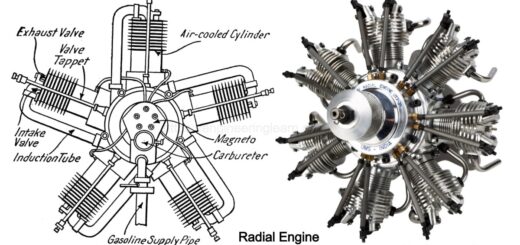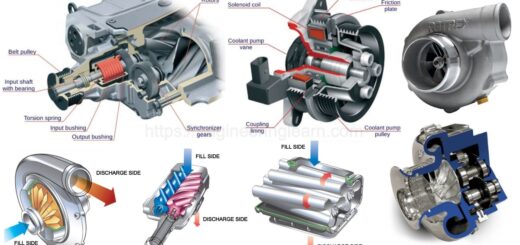6 Types of Helmets (Motorcycle) – Anatomy of the Safest Motorcycle Helmet [with Pictures & Names]
![Types of Helmets (Motorcycle) - Anatomy of the Safest Motorcycle Helmet [with Pictures & Names]](https://engineeringlearn.com/wp-content/uploads/2022/09/Helmets-1024x539.jpg)
Introduction
Types of Helmets (Motorcycle) – Anatomy of the Safest Motorcycle Helmet [with Pictures & Names]: – At the point when you hit the road, a quality cap should go with your riding gear. Given its part in safeguarding you in the event of an accident, you should pick a protective cap that is sturdy yet agreeable. Notwithstanding, a wide range of kinds of head protectors in the present market can without much of a stretch rattle you.
Things being what they are, how would you take a pick? Peruse this aide on the sorts of cruiser head protectors to settle on an educated decision.
Types of Helmets for Motorcycle
1. Full-Face Helmets: ( Types of Helmets )
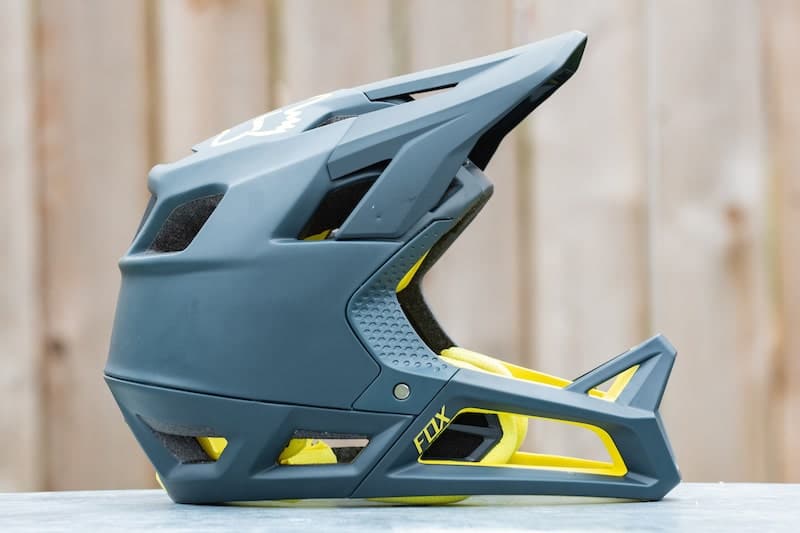
The greatest full-face helmets are especially made to completely enclose your head and face. The inclusion of a chin bar is a modest but distinctive feature of this type of headgear. In the event of an accident, it protects the chin and jaw from potential impact. In reality, studies show that 50% of serious hits during a crash occur to the chin, and in these circumstances, only a full-face helmet can shield it.
Albeit bulkier than its partners, a full-face bike head protector offers most extreme insurance against wind and sun. Furthermore, it downplays the commotion level as well as keeps downpour from crawling inside. It is a flexible decision. A different scope of bikers utilizes a full-face head protector, independent of their kind of ride. Besides, you can pick a full-face head protector for a bicycle in view of your trekking style.
For instance, sport bikers frequently ride with their knees bent. They need a helmet that won’t lift at faster speeds as a result. Here, a full-face helmet with a taller chin bar and a slightly upward-angled visor hole is appropriate. Tourers and cruisers, on the other hand, typically choose a helmet with a more direct visor opening and a lower chin bar. Pick one among the well-known full-face helmet manufacturers.
2. Half-Face Helmets: ( Types of Helmets )
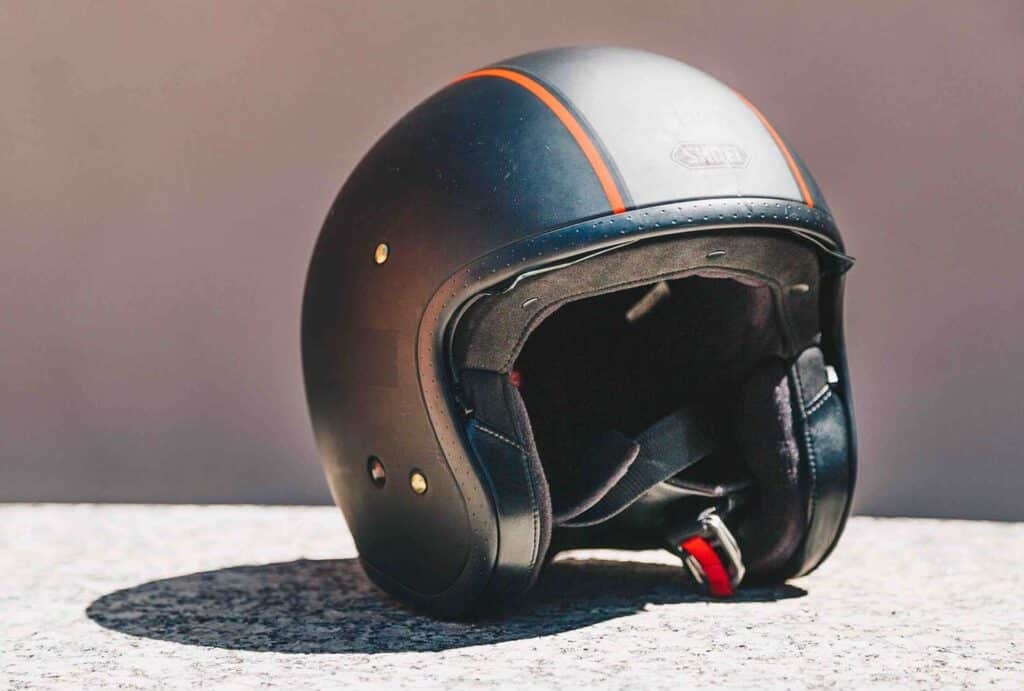
This one safeguards your head however allows the face to remain uncovered. Thus, the best half-face protective caps cover the highest point of your head and the region from your eyebrows to the brow. The face is safeguarded through the visor, which likewise offers a total perspective on your driving field.
It goes without saying that the airflow in these half-face motorcycle helmets is superior. In an accident, they provide only a sliver of protection, leaving one open to facial damage. Additionally, while wearing this helmet, you will experience higher wind resistance.
Simultaneously, an exemplary half-face head protector is an ideal pick for the people who experience suffocation in full-face caps. Thus, on the off chance that you like to appreciate short and agreeable rides, this head protector is appropriate for you.
3. Half-Shell Helmets: ( Types of Helmets )
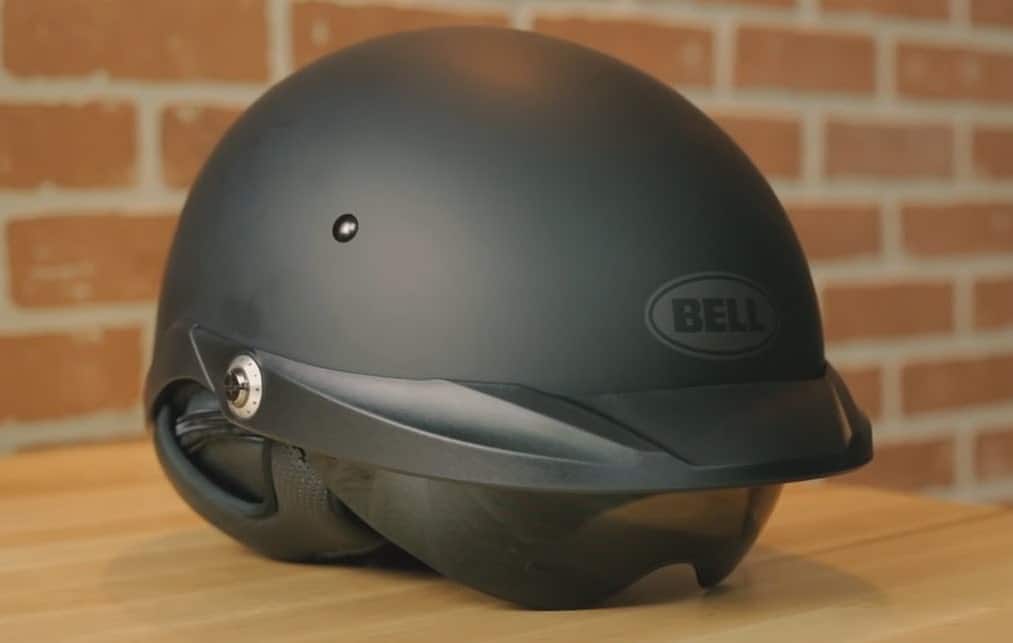
These, which are often referred to as skull helmets, are simply intended to cover the top of your head up to the ears. Therefore, your neck, jaws, and face remain exposed when you wear the best half-shell helmets. This helmet provides a full vision of your driving field as a result.
These helmets do not, however, pass muster when it comes to impact protection. These are known to provide the least amount of road safety. As a result, people who want to push the envelope might not want to wear it as a helmet.
Also, the best half-shell cruiser head protectors expand expanded breeze opposition and put an additional burden on your neck. The shortfall of a visor likewise opens your face to a few harming components, for example, heat, UV beams, downpour, wind, and residue.
Hence, half-shell bike head protectors are great for the people who ride over brief distances or travel by means of a bike. That being said, in the event that you are a biker, we recommend that you don’t think twice about security and pick a more defensive and strong head protector.
4. Modular Helmets: ( Types of Helmets )
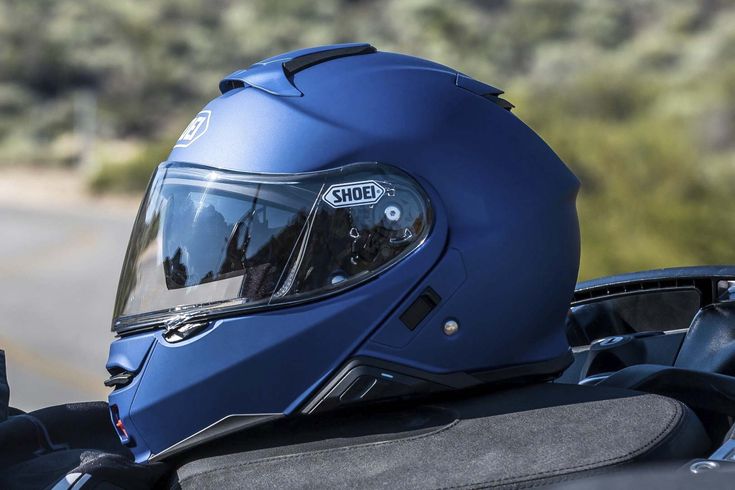
The best modular helmets are a cross between half and full-face helmets. These may also be opened from the front by flipping up the chin bar and visor, earning them the name “flip-up helmets.” Modular motorcycle helmets are made to be equally protective as full-face helmets and have the same fit and construction.
The best measured cruiser head protector incorporates an extra inside visor for ideal eye insurance from daylight. It will in general weigh somewhat in excess of a full-face protective cap as it consolidates additional plan pivot highlights at the flip-front and center region. The jaw bar of these caps sits lower on the face, and eye openings are clear.
Modular motorcycle helmets are suitable for adventure riders, cruisers, and tourers because they are made for an upright riding position. Some of these helmets now include an anti-fog coating on the main visor as well.
Despite the fact that it barely decreases security because of the pivot structure, the head protector offers better assurance thought about than half-face caps. Thus, assuming that you are searching for a head protector that expands ideal insurance and solace, we recommend you go for this one.
5. Dual-Sport Helmets: ( Types of Helmets )
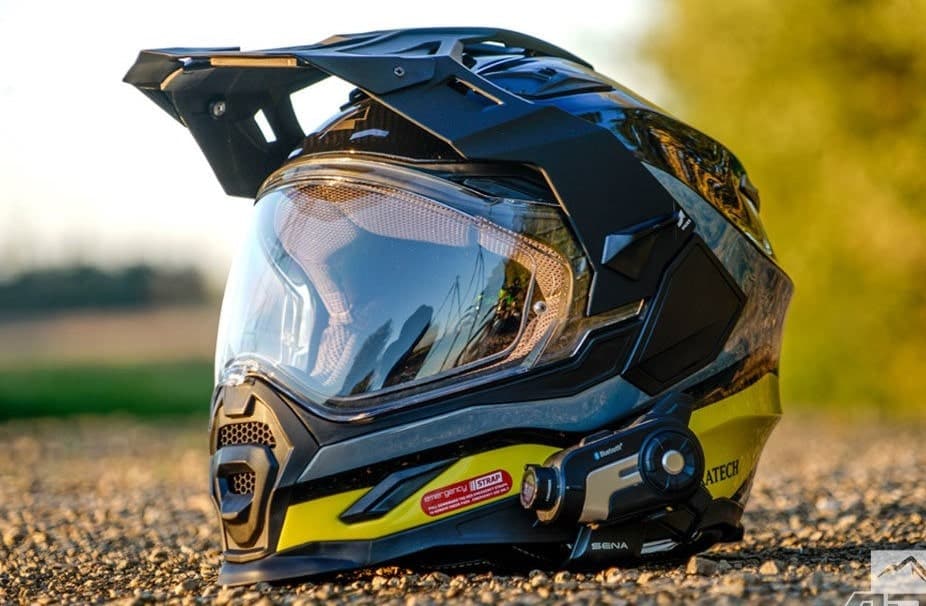
The greatest dual-sports helmet combines the best aspects of full-face and off-road helmets. It has a lower chin bar and a sizable visor that give it the look of an off-road helmet. The inside cushioning in this helmet, however, gives it the comfort of a full-face helmet. Because they fall somewhere in the middle of each of these designs, the best dual-sports motorcycle helmets are suitable for both on- and off-road use.
Now that you are know all about the similitudes among double game, rough terrain, and full-face head protectors, let us feature their disparities. A double game head protector’s visor is streamlined, so it doesn’t lift with the breeze, in contrast to most go mud romping caps. Then again, its jaw bar doesn’t project as much as a rough terrain protective cap, prompting upgraded soundproofing and diminished wind current.
Additionally, the greatest dual-sports helmets come with a wider eye protection visor than full-face helmets. A dual-sport motorcycle helmet’s visor can also be snapped up to create room for eyeglasses or goggles. Therefore, if you transfer between terrains in a single day, this helmet is a fantastic complement to your equipment.
6. Off-Road Helmets: ( Types of Helmets )
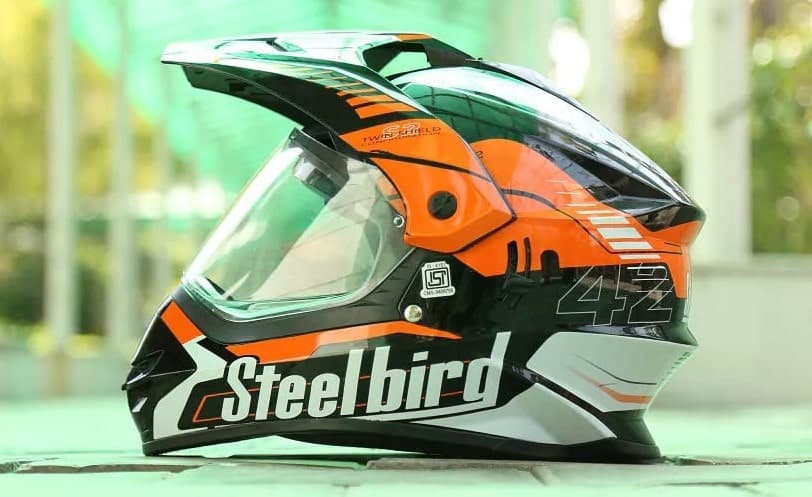
This style of helmet is designed for riders who prefer to avoid riding on busy streets and difficult terrain. It goes without saying that using it on roads and in cities is not recommended. This one, however, goes perfectly with your off-road drives.
Off-road bike helmets seem similar to half-face helmets, but there are some important differences. It has a chin bar that is more prominent, which significantly improves ventilation. An off-road helmet’s design is also sharper and more angular, and it has a bigger visor. In summary, because off-road helmets are lightweight, you can count on them for the best possible protection, ventilation, and comfort.
Be that as it may, these generally don’t expand eye security. Accordingly, on the off chance that you intend to purchase a rough terrain bike cap, be ready to ride your motorbike with goggles or glasses. Such defensive stuff is of most extreme significance to monitor you against flotsam and jetsam interruption from the sides, front, or base.
Moreover, awesome rough terrain protective caps come in a few composite choices, in particular Kevlar, carbon fiber, and fiberglass. These materials are strong as well as lightweight. Thus, you can be guaranteed that your neck and back won’t get exhausted after a long ride.
Factors to Consider Before Buying a Helmet
With regards to getting one, we recommend you remember the accompanying focuses:
Wellbeing norms for caps in India: according to the Ministry of Road Transport and Highways, each cap should highlight the ISI mark from June 1, 2021. ISI normalization forbids head protectors from weighing over 1200gm.
Your head shape and size: Wearing some unacceptable cap can come down on specific focuses in your mind. The right-sized one, then again, fits you impeccably. For this, you can wear a cap and take a stab at gesturing your head. On the off chance that the head protector moves, it implies that it is free and will in all likelihood fall off in an accident.
Visors come in a wide variety, just like motorcycle helmets. Smoked or mercury-tinted visors may be attractive to the eye, but they impair eyesight. Additionally, you may want to think about purchasing a helmet with an anti-scratch and anti-fog visor, which are really trendy right now.
You must make sure your helmet has the appropriate inside padding. It enables a helmet to deflect impact in the event of an accident, protecting the wearer’s head from harm.
Also, this finishes up our article on the various sorts of protective caps. We have effectively covered six kinds of cruiser head protectors with the goal that you can make the ideal buy. Thus, pick admirably and ride securely.
The Anatomy of the Safest Motorcycle Helmet
To stay up with technological breakthroughs, the motorcycle helmet is always changing. Using lighter materials to prevent neck strain, more cushioning for comfort, and Bluetooth speakers to make the most of your smartphone’s features are just a few examples of what is covered in this.
Although these cutting-edge technologies are still being added to motorcycle helmets, their basic structure hasn’t changed much over the years.
The outer shell, impact-absorbing liner, padded comfort layer, and retention system/chin strap are the four basic parts of a motorcycle helmet. Each part of the helmet has a distinct function and helps to protect your head.
1. Impact Absorbing Liner
The impact-absorbing liner, which is commonly constructed from EPS (expanded polystyrene) foam, is located inside the outer shell. The liner’s main job is to disperse energy and absorb shock during an impact. Foreign objects are prevented from entering the helmet by the outer shell.
The inner layer prevents the impact’s energy from reaching your skull. One-density foam may be used in some layers. For increased energy displacement during an impact, other versions can contain a dual-density layer, which combines two layers.
2. Padded Comfort Layer
It ordinarily comprises of an open-cell froth shrouded in a moment fabric material, intended to wick away perspiration and keep you cool while riding.
It is generally removable for the purpose of cleaning and is exchangeable to oblige different head shapes. Check with your protective cap maker to check whether they offer different solace liner shapes to accommodate your head shape best.
3. Retention System/Chin Strap
The chin strap, also known as the helmet retention system, is fastened underneath your chin to hold the helmet on your head as you ride. It is secured with two d-rings and is constructed of a woven cloth.
When properly fastened, the chin strap shouldn’t allow more than two fingers to pass between it and your chin. In order to wick away sweat and provide comfort when it rests against your skin, the strap is typically partially covered with material that matches the comfort liner. A set of instructions outlining the proper way to secure a chin strap.
4. Outer Shell
The inflexible external shell is the peripheral, hued piece of the cap you view from an external perspective. This typically comprises of Kevlar, carbon fiber, polycarbonate, shaped plastics, or a mix of those materials. Its essential capability is to safeguard your head in case of effect or scraped spot and to keep entrance from outside objects, like rocks, bugs, and so forth.
5. Vents
The ventilation framework on the cap is intended to keep the rider’s head cool and assist with vanishing off the seat as best as could really be expected. Ventilation is more predominant on full-face and ¾ caps however can shift by type, contingent upon the producer. Most vents have the choice to open and close for various weather patterns.
You might need it completely open during hotter months, completely shut during cooler months, and some in the middle between during different pieces of the riding season. They are movable, which makes them a decent choice for every rider’s solace.
Content Source: – motorbeam
Image Source: – himsale, seasonalstoremanager, angoshayvancilik, retrobikegear, pinkbike, motorcyclistonline
